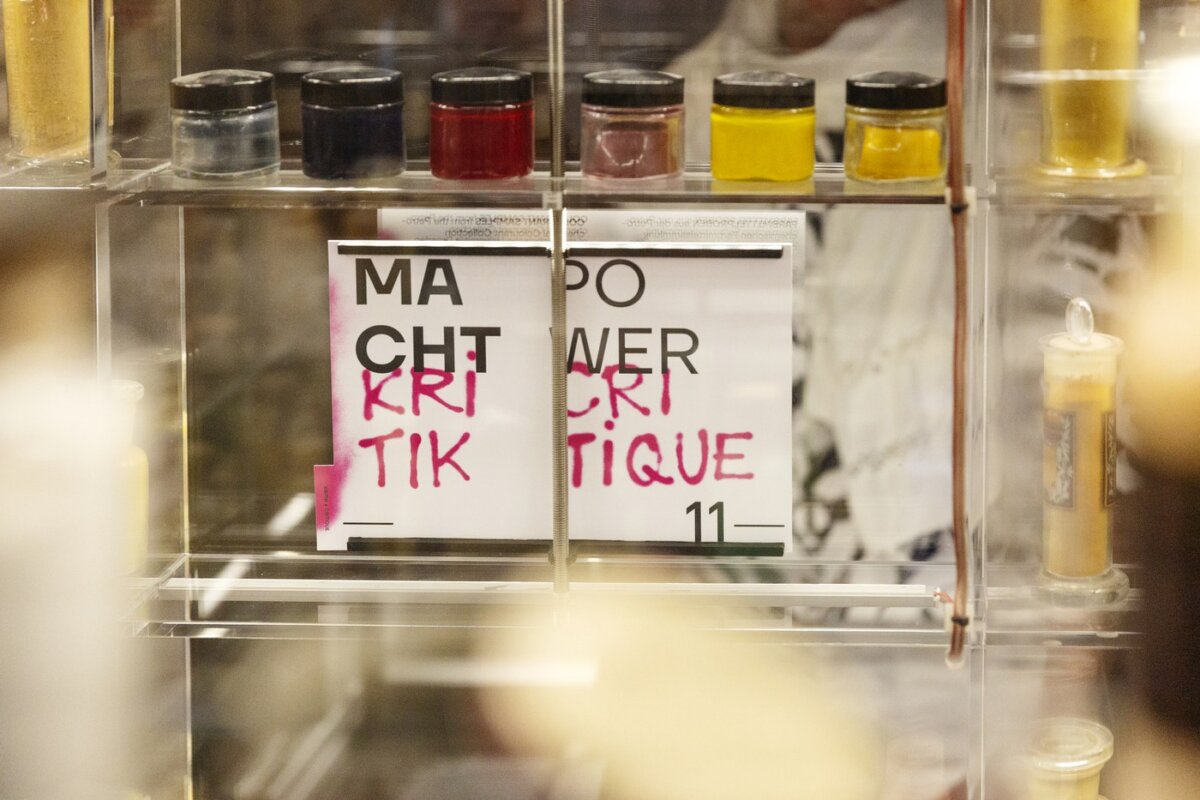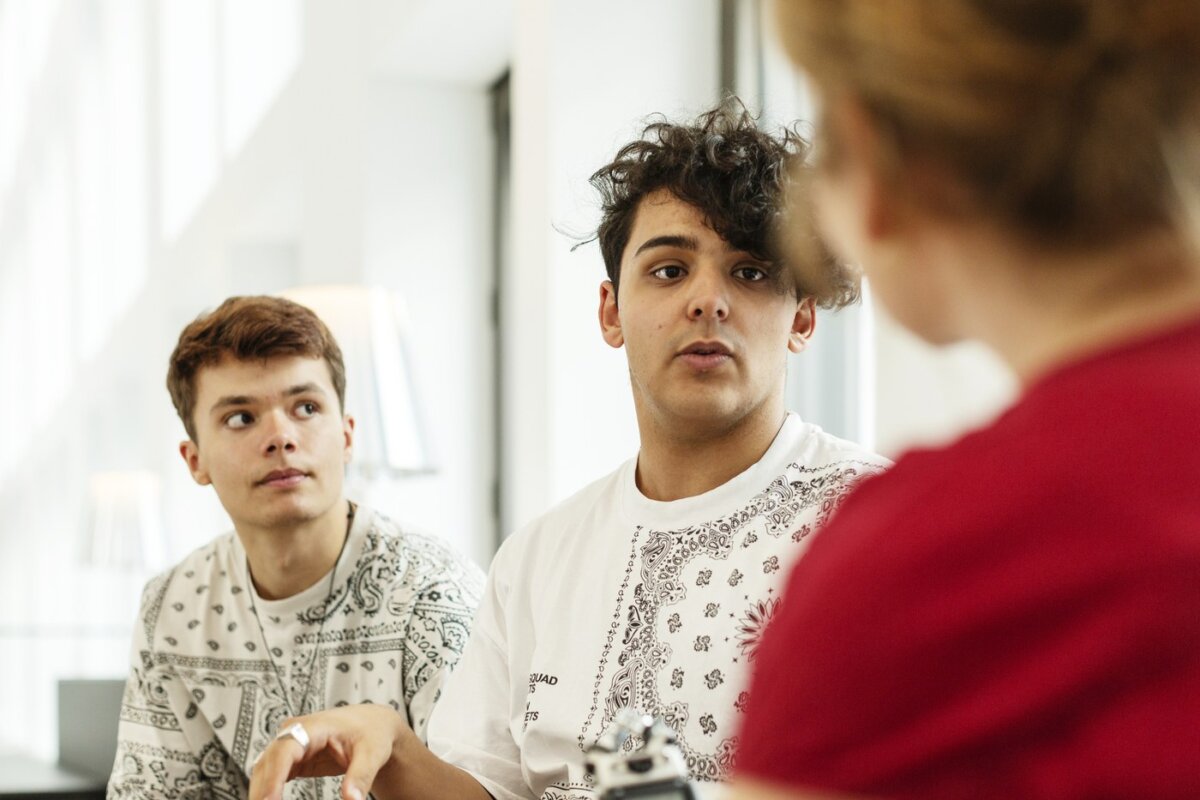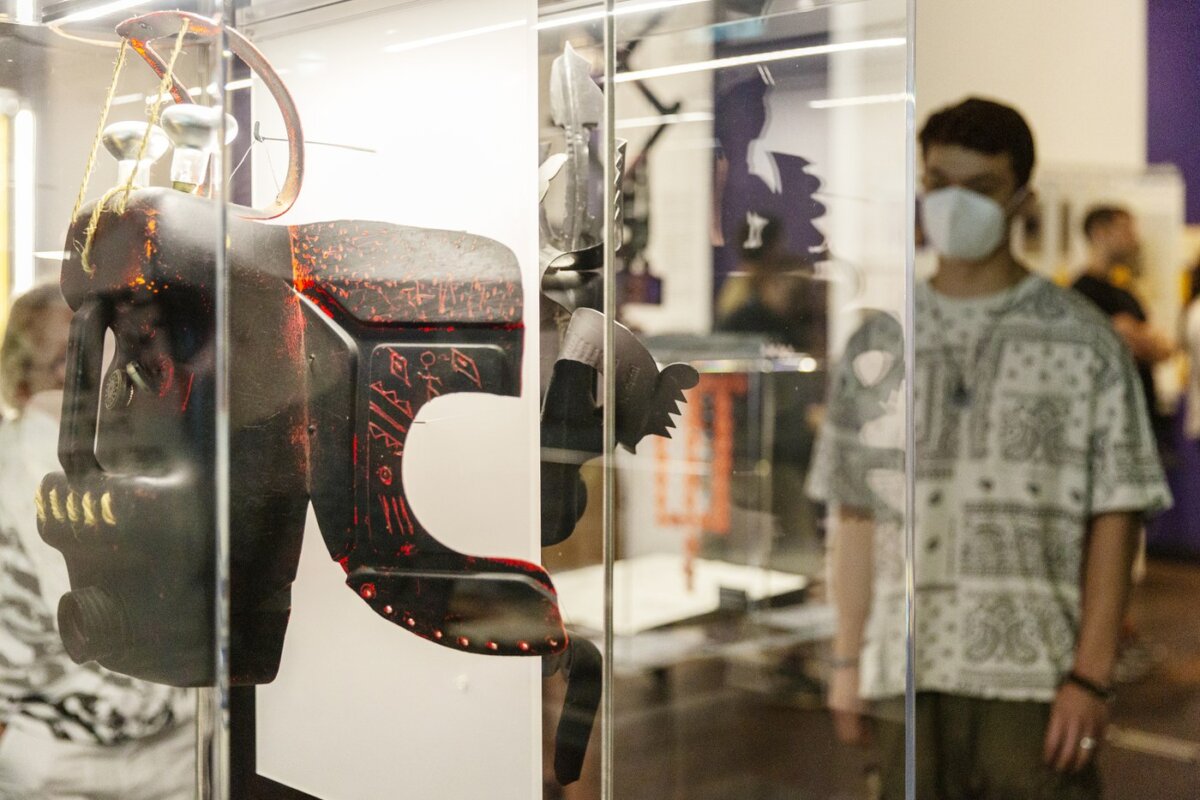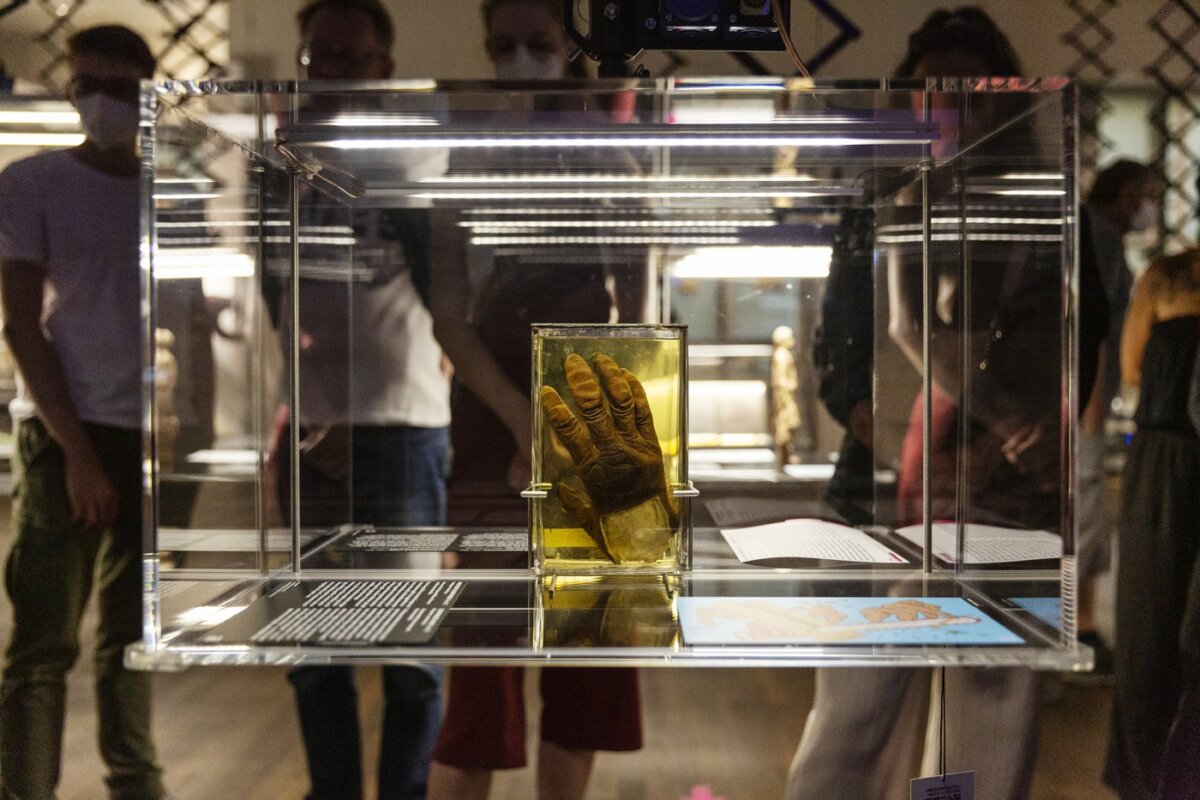You went through the exhibition with a group of visitors, presented your perspectives to them and discussed them. How did you experience this tour?
Mouhamed Abed-Ali: A guided tour like this is a big responsibility. That’s why we were a little nervous. It went quite well, also because we weren’t completely alone. We had each other and also Mohammed Minar Quayim, who was able to give us more information about the exhibition. It was difficult when questions came up that we couldn’t answer so quickly or in such general terms. For example, someone asked how things were going in Germany with the oil crisis, inflation and protests. We can’t answer that because we don’t know.
What have you yourselves learnt from dealing with the exhibition?
Mouhamed Abed-Ali: Personally, it made me realise once again how connected the world is, both positively and negatively. There is nothing that you pack somewhere else or that happens somewhere else that won’t affect you here sooner or later. For example, during the coronavirus pandemic, we thought: that’s in Wuhan, it won’t happen here. But the world is smaller than you think.
Jan Hagen: The project has also strengthened my political views because it has confirmed that we need to change things. There is a power imbalance in the world that is not good for the Global North in the long term.
Mouhamed Abed-Ali: It’s frightening that double standards are still constantly being applied. We didn’t think it would still be this bad in 2022. For us, that means we have to deal with it more.
What other projects are you pursuing with Critical Young Friends?
Jan Hagen: Apart from that, we organise exhibitions in our own museum, the Jugend Museum in Schöneberg. We also have collaborations, for example with the Berlin University of Applied Sciences.
We do a lot of museum work, but also other projects. For example, the museum helped with the U18 elections. We try to convey an awareness of democracy and show others: You have to get involved! You could call some of that activism.
Mouhamed Abed-Ali: Yes, we do a lot of educational and empowerment work – for example in the Tape Art project, where we make a work of art out of adhesive tape with other young people. In the very first Discovery History Act Now project, called ‘Zeichen setzen’ (Making a mark), we interviewed various activists in front of the camera who deal with anti-racism, antiziganism and anti-discrimination in general. We wanted to show that racism is still a big issue.
Further information: HTTPS://WWW.DISCOVERHISTORY-ACTNOW.DE/CYF/



